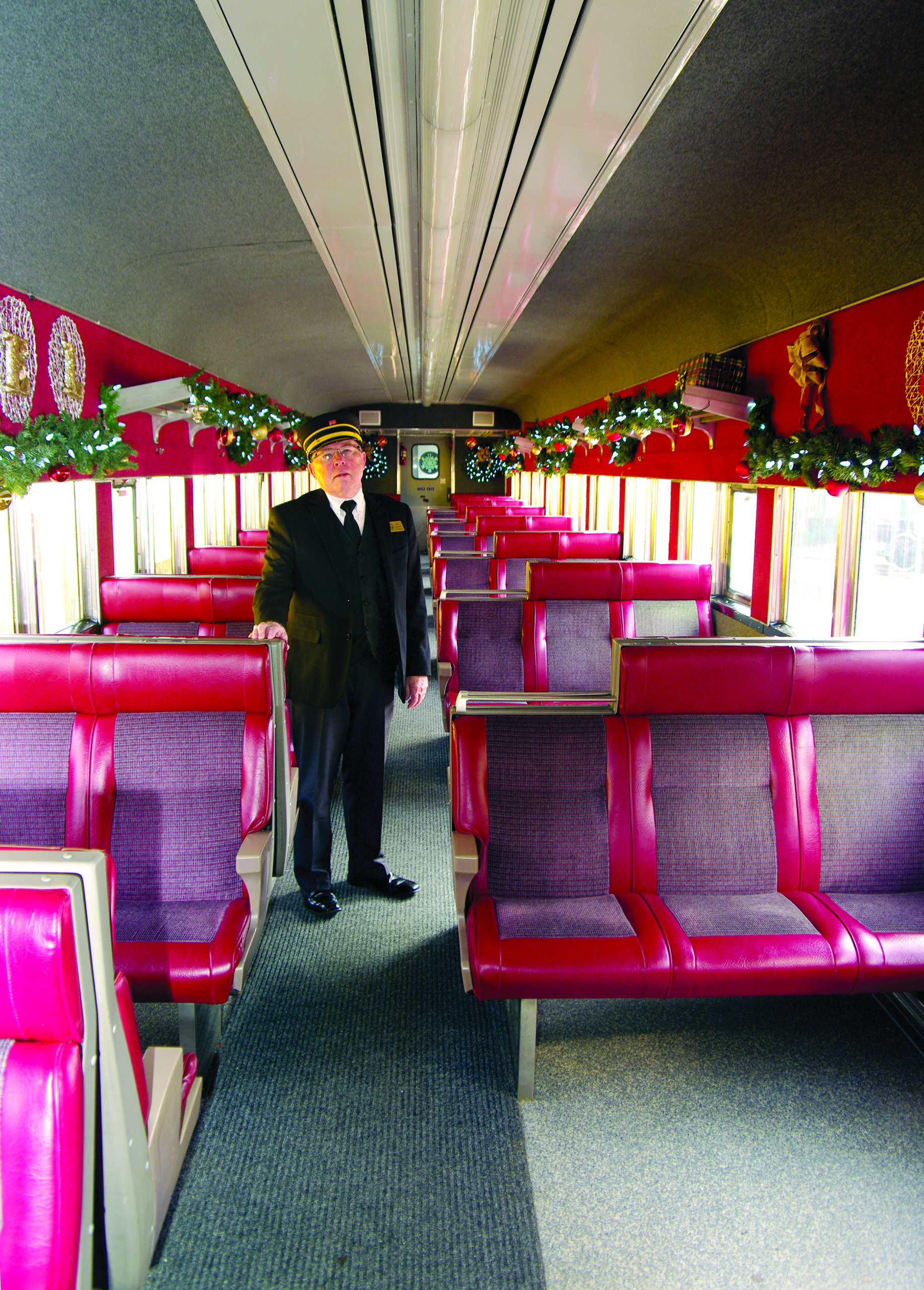
After 1830, when the General Assembly of Alabama approved the Tuscumbia Railroad in Franklin County, railroads steadily became more important to the young state as an efficient transportation option for people and goods. Many towns and cities can trace their beginnings directly back to the railroads and the business it brought to otherwise remote areas of the state, including Birmingham, which was developed at the intersection of two rail lines – making transportation of raw materials for the fledgling steel industry possible.
Heart of Dixie Railroad Museum
The rumble of a locomotive welcomes me when I arrive at Heart of Dixie Railroad Museum; I feel a subtle vibration in the air. For any train and railroad buff, these are the things railway dreams are made of.
The museum, the official railroad museum of the state of Alabama, is located just south of Birmingham in Calera. Straddling a stretch of what was The Alabama Mineral Railroad that once served much of central Alabama and Birmingham, the museum includes a large collection of railroad cars, locomotives and cabooses, and a train designed for regular rail excursions into the Alabama countryside.
The mineral railroad was a mixture of freight and passenger cars, and traveled as far east as Anniston before circling back to Birmingham and then down to Calera before heading east again.
“The train stopped at all the little towns along the way,” says Jim Garnett, museum president. “At the same time limestone, iron ore and coke were collected and then dropped off in Birmingham for the steel industry before making the journey again.”
There are also two restored train depots at the museum. One now serves as a showplace for smaller items, including historic uniforms, signal lights and lanterns; linen, china and cutlery from early train travel; and lots of historic photos.

“We have an extensive collection,” says Garnett as we walk around the gallery.
“Our organization dates back to the 1960s,” he says as we walk outside for a closer look at some of the railcars. “We started out in Birmingham, but in the ’70s we realized we needed a bigger area to store our collection.
“A lot of our collection has been donated by railroad companies, or the cars are surplus and we bid on them to add to our collection,” he says. “We have tank cars, box cars, railroad post office cars, flat cars, passenger cars, baggage cars; we even have a camp car that was used by employees working on rails in remote areas. It is equipped with beds and a small kitchen.”
One car Garnett is especially proud of is a planetarium dome car. “We have extensively restored it,” he says. “We’re lucky to have it in our collection.”
Garnett says the non-profit museum’s train rides are their main source of income. Throughout the year regularly scheduled excursions as well as special events provide more than 40,000 guests the opportunity to ride the rails.
Huntsville Depot and Museum
Listed on the National Register of Historic Places, the Huntsville Depot dates to 1860 and is the oldest train depot in the state, and one of the oldest in the nation.
“The Depot served passengers and was the corporate office for the eastern division of the Memphis & Charleston Railroad,” says museum tour guide Winter Forest. “It was used until 1968.”
We start the tour in a life-size diorama complete with moving animatronic ticket agent, telegraph operator and mechanic catching 40 winks. The figures are surrounded by antique furniture and equipment showing what it was like to work for the Southern Railway at the turn of the last century.
The next room once served as the waiting area for passengers. It is now home to dozens of interesting artifacts and informational displays. Several trunks are stacked along one wall just below a schedule board, and benches stretch down the center of the room.
“There is a lot of Civil War history associated with the depot as well,” says Forest. “Union Forces occupying Huntsville during the Civil War used the depot as a prison for soldiers in the Confederate Army in 1862.
“Come on upstairs,” he says. “The graffiti the soldiers wrote is still on the walls.” Protected by Plexiglas, the pencil-written signatures, messages, drawings and dates can still be seen.
Another display helps explain the importance of cotton in the South and how it was grown, harvested and prepared for transport to mills. Several photographs show the depot in its heyday, and a large model railroad illustrates the local rail history.
Alabama has a wonderful and rich train heritage spanning nearly two centuries. A visit to one of these museums, or another restored depot or rail museum, is a worthy history lesson. Volunteers and train enthusiasts are always available to answer questions.
Railroad museums and attractions in Alabama
Heart of Dixie Railroad Museum, 1919 Ninth St., Calera. (205) 757-8383; www.hodrrm.org.
Huntsville Depot and Museum, 320 Church St., Huntsville. (256) 564-8100; www.earlyworks.com/huntsville-depot-museum.
North Alabama Railroad Museum: 694 Chase Road, Huntsville. (256) 851-7276; www.northalabamarailroadmuseum.com.
Bessemer Hall of History: 1905 Alabama Ave., Bessemer. (205) 426-1633; www.bessemerhallofhistory.org.
Foley Railroad Museum: 125 E. Laurel Ave., Foley. (271) 932-1818; www.foleyrailroadmuseum.com.
Fort Payne Depot Museum: 105 Fifth St. NE, Fort Payne. (256) 845-5714; www.fortpaynedepotmuseum.com.
Wales West Light Railway: 13670 Smiley St., Silverhill. (251) 943-1818; www.waleswest.com.




